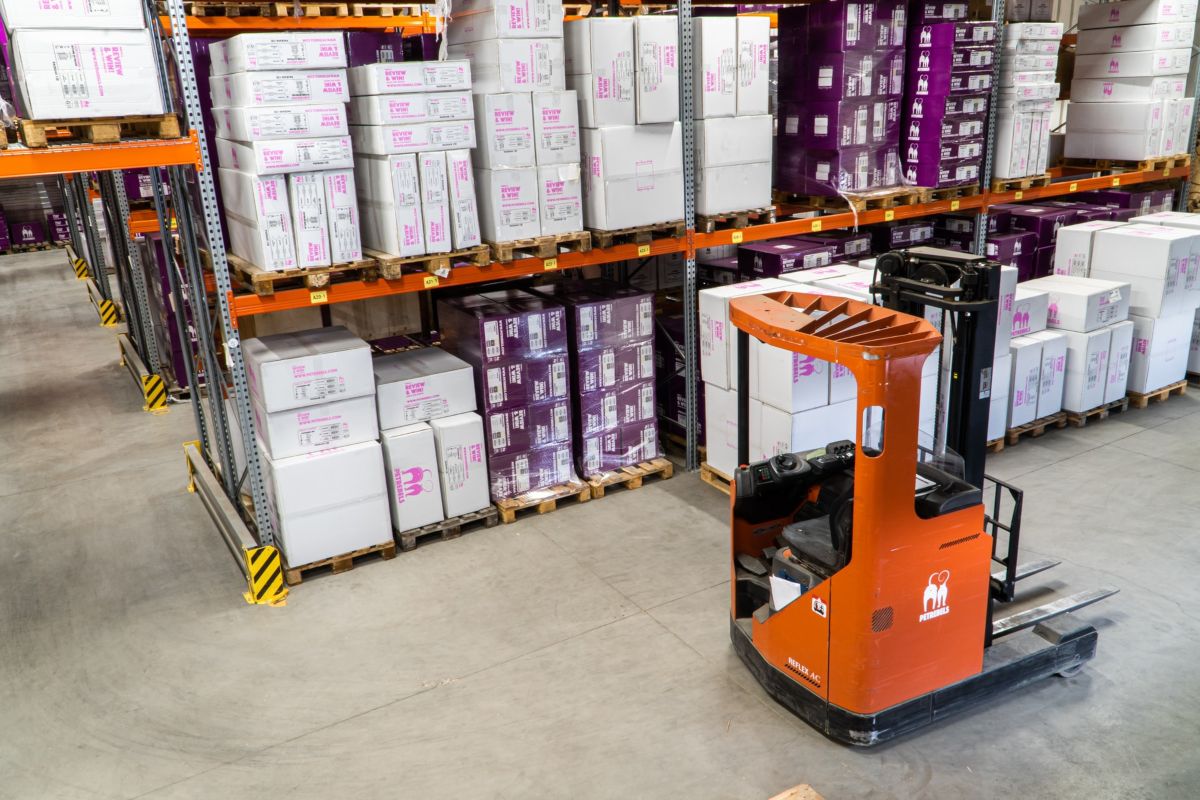The storage methods of today are not the methods of yesterday.
Technical innovations have introduced new products that bring advantages in storage capacity, ease of access, information technology, and automation.
Ready to learn more? Here are five of the most exciting developments in storage technology.
5 Ways Technology Has Made Storage More Efficient

1. High-Density Mobile Shelving
High-density shelving works by embedding tracks in the floor. Mobile shelves are placed atop these tracks and utilize them to move around. This allows for the elimination of fixed aisles between shelves—a huge efficiency gain.
Businesses that adopt high-density shelves may achieve up to 50 percent gains in storage capacity. Additionally, by reducing the distance traveled to retrieve and stow items, worker picking speed is increased.
Because high-density shelves must be moved to access their contents, you can easily secure the shelving with electronic or mechanical locks, a marked security improvement over traditional static shelving.
Mobile shelving comes in several varieties. One way of distinguishing between them is how they move: either by cranks or electronic buttons. Some high-density storage even has a mobile app to move the stacks.
Low-profile mobile shelves are a low-cost, high-value solution that gives you the option of moving your storage system to a new location if you expand or relocate.
Lateral mobile shelving is a very compact system in which shelves from one to four levels deep move on lateral tracks. These are commonly used for office storage but can also be located in a self-storage unit.
2. Flow Racks
Flow racks harness the power of gravity to move cartons or pallets through a storage rack, reducing time handling materials and increasing operating speed. They consist of angled shelves with decking made of rollers.
They are typically loaded from the back and use grades of three to four percent to roll packages downhill to the front of the shelf, where pickers operate. The advantage of this setup comes from separating the loading and the picking aisles, which improves efficiency by avoiding bottlenecks.
Flow racks are best used with a first-in, first-out (FIFO) storage strategy and are most suitable for high throughput products, such as perishable goods.
3. Pallet Racking Systems
Pallet racking is a system in which pallets full of goods are stored in racks, and when you want to move the goods, you move the pallet. More technically known as selective pallet racking, this approach has been around for a while, but recent improvements have increased its storage capacity and picking efficiency.
One new variant, drive-in pallet racking, achieves very high storage density by having forklift drivers push pallets onto rails, so each additional pallet moves older pallets back. With drive-in racking, you’re required to use a last-in, first-out (LIFO) storage strategy.
Push-back pallet racking is similar to drive-in racking, with the difference that pallets in the deepest position on the rack are automatically pushed forward when the first pallet is removed.
This saves effort moving pallets, increasing the efficiency of your forklift operators. Like drive-in, push-back pallet racking assumes a LIFO storage procedure.
Pallet flow racking is a contrast to push-back racking. In pallet flow operations, you load pallets into the rack from the back, and rollers carry the pallet on an incline toward the front of the rack.
Pallets are then removed from the front, and the next pallet automatically rolls to the front of the rack. The result is a highly efficient setup for a FIFO pallet management strategy.
4. Warehouse Management Software (WMS)
Variously called warehouse management software or warehouse management systems, a WMS is a comprehensive software solution to the many challenges of warehouse operation.
WMS has led to significant advances in warehouse efficiency and transparency, to the point that most major third-party logistics companies couldn’t conceive of running their warehouses without a WMS.
A WMS handles every step of the journey from material arrival, processing, and put away, to inventory control, picking, and shipping. Typical features include warehouse design, inventory tracking, yard/dock management, receiving, picking, and shipping.
A good WMS allows you to optimize your warehouse layout, storage strategy, and worker scheduling, so you’re getting the most value out of your systems at all times.
Many companies sell WMS solutions, both on-premises and in the cloud, so you’re sure to find a software package that fits your budget, company size, and work style.
While the upfront cost can be considerable, a good WMS will pay dividends for years to come through better inventory management, improved shipping speeds, and more efficient labor use.
5. Automated Material Handling Systems
An automated material handling system is a step beyond a WMS in terms of warehouse automation. While a WMS tells you what goes where, and then people move the goods, an AMHS will move the goods for you. The result is higher facility throughput, decreased shipping times, and less labor.
First created for manufacturers, the AMHS is gradually moving into the world of warehouses and third-party logistics. An example of an AMHS in action is the rack moving robots at Amazon warehouses, the end result of Amazon’s acquisition of Kiva Systems in 2012.
Amazon says their adoption of automation reduced the time from website order to shipping (click-to-ship) from 60 to 15 minutes and saved 20% on operating costs. We’re sure to see more AMHS adoption in the future.
The Future of Storage
As William Gibson wrote, “The future is already here—it’s just not very evenly distributed.”
We can see hints of the warehouse of the future in the storage technologies we’ve discussed. Advanced pallet racking and flow racks are likely to make an appearance. A comprehensive Warehouse Management Software system is a given.
Complete automation via an automated material handling system is a distinct possibility. The cumulative effect of these technologies will be extreme gains in efficiency, to the point that we’ll scarcely believe how we did things in the old days.
There’s much to be excited about in storage technology, and there’s no better way to see the future than by building it yourself.
Read Also:
- 4 Benefits of Self-Storage For Businesses
- What Nobody Teaches You about Getting Your Amazon Startup off The Ground
- How To Select The Right Warehouse Management Software
Author: Maria
















